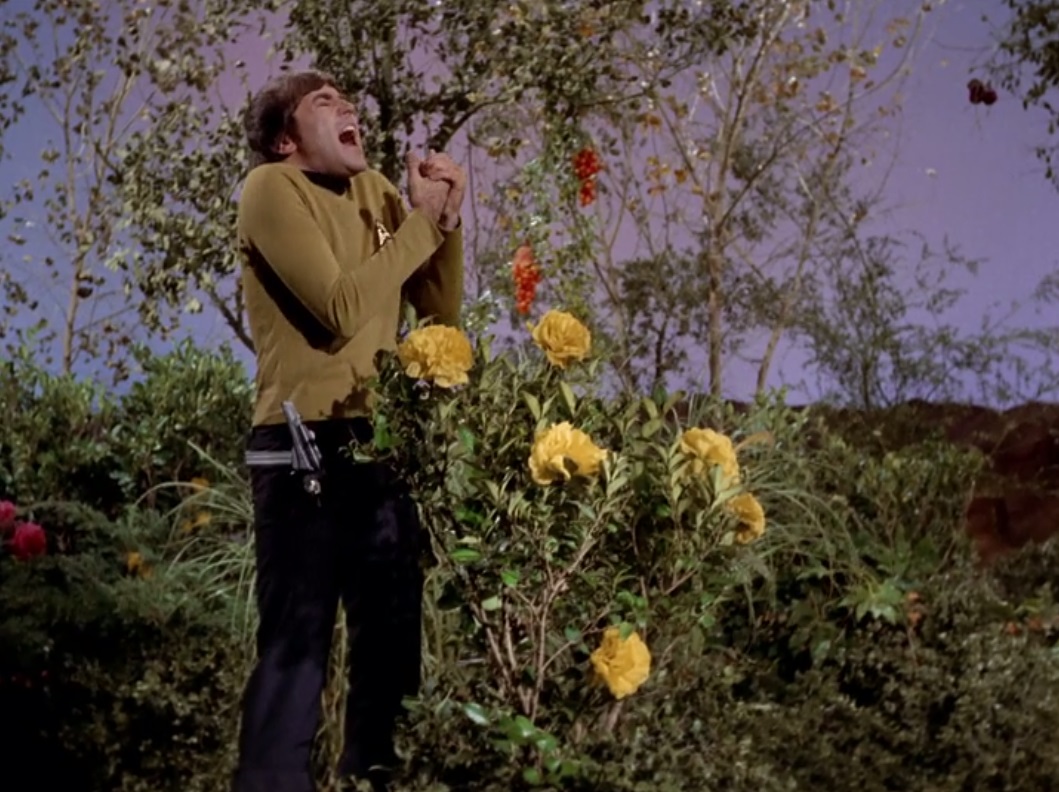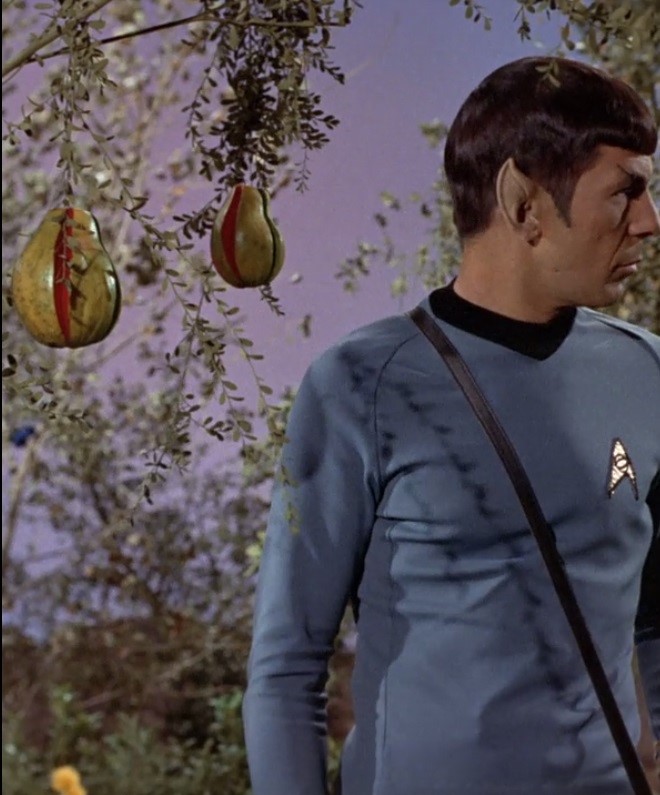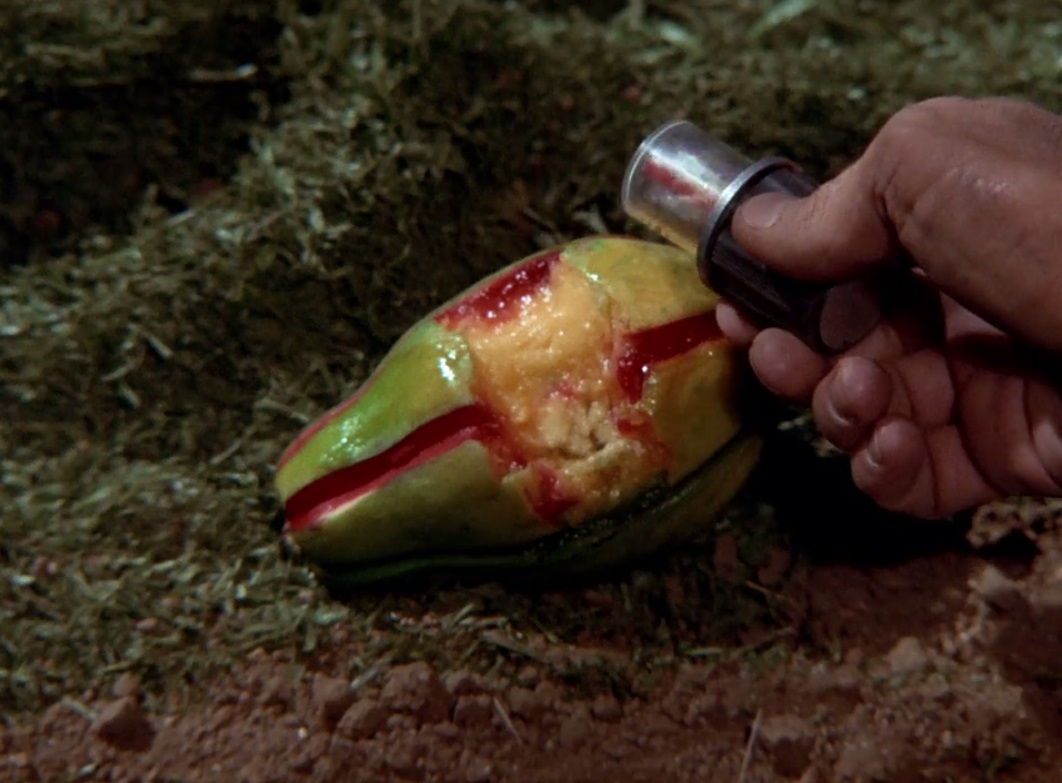| Welcome to planet ouch |
 |
|
In The Way to Eden (S3E20), the Enterprise is hijacked by a madman-scientist and his hippie followers. The culprits flee to a Romulan planet to set up a hippie commune, only to be foiled by the indigenous plants—flesh-burning flowers and poisonous fruits. What blows my mind is that organisms can contain harmful chemicals for defense without succumbing to damage themselves. For example, some plants contain psoralen, which causes sun rash (phytophotodermatitis). Psoralens are activated by light and bind to DNA, inducing rapid cell death. Notice ACTIVATED BY LIGHT! Plants are quintessential beings of light. In fact, plants can be harmed by their own psoralens. They combat self-damage by producing other compounds, like flavonoids, to quench photosensitization reactions that would otherwise wreak internal havoc. (Secondary Plant Products Causing Photosensitization in Grazing Herbivores: Their Structure, Activity and Regulation) |
 |
 |
| Alien flower burn left, phytophotodermatitis right | |
|
Earth roses don't contain psoralen. See species in Apiaceae and Rutacea families, like wild parsnip and citrus. The extraterrestrial plant pictured above looks suspiciously rose-like, but with, perhaps, a psoralen kick instead of thorns to discourage predators. I would totally grow that in my garden... In the front yard. By a walkway. Because I'm diabolical like that! |
| A pear crossed with Smucker's Goober. A Poober. |
 |
 |
 |
| Poison or no, ornamental value is A+. |
 |
|
Et tu, Poober? |
Go to Plants of Star Trek (Part 1)
Go to Plants of Star Trek (Part 2)